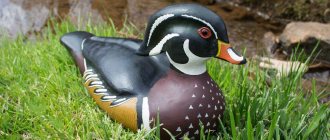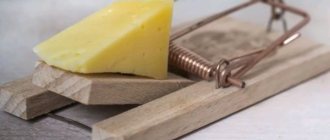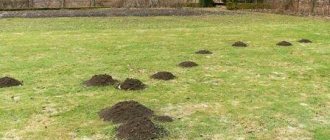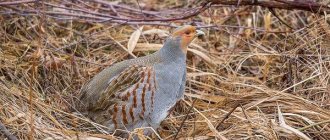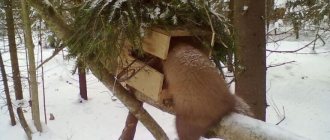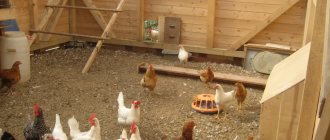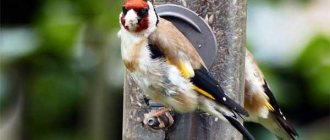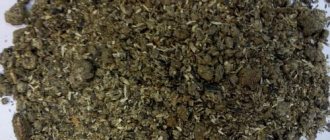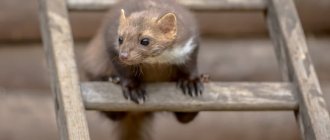How to catch a partridge without a gun
For those who do not know how to catch a partridge without a weapon, the following information will be useful. Partridges are still a desirable prey for hunters. And some hobbyists breed them on their farms. The carcass of an adult reaches 600 g, and the meat has excellent taste. These birds belong to the pheasant family. Four species live in the CIS. The most common is the gray partridge. It lives almost everywhere where there is forest-steppe, steppe or shrub vegetation. Lives sedentary.
Partridges are still a desirable prey for hunters
The bearded (or Daurian) partridge is very similar to the previous species, but its habitat extends from Southern Siberia to Dauria and the Altai steppes. It is also found in the Fergana Valley in Uzbekistan. The white partridge lives in taiga forests and tundra. During the year they roam considerable distances in search of food. The red partridge, or chukar, is common in Central Asia and Kazakhstan.
About winter partridge hunting
In winter, the main food of gray partridges are tree buds and grass seeds. When food becomes insufficient, birds move closer to human habitation: here they have the opportunity to find food near granaries and livestock farms. The birds spend the night in bushes near the feeding area.
You can determine whether there is a bird near a populated area by the characteristic tracks in the snow that partridges leave in places where they search for food and spend the night. Birds live in flocks, in winter they feed throughout the daylight hours, and when they find food in any place, they visit several times, which allows hunters to track game and even lure it to where it is hunted.
What kind of animal is this - partridge
All partridges are flocking birds. They live in families of 4-7. When migrating, they can form giant flocks of up to 300 individuals. They fly rather poorly, but they run and camouflage well, so spotting a partridge hidden on the ground is not at all an easy matter. The basis of the bird's diet is plant food. However, in summer they happily eat various insects. And in winter, partridges are content with the buds of bushes and winter vegetation.
In addition to shooting birds, various devices are used to catch partridges. They are caught alive for domestication and breeding of these birds in captivity, to strengthen the breeding stock of birds kept in aviaries. Chukars are also kept for decorative purposes. The habits of all partridges are quite similar. Birds feed on the ground, flying up only when necessary. The flight is swift, straightforward, but short. When taking off, they flap their wings so loudly that they can scare a person.
The most common fishing methods
How to catch partridges without harming them? The easiest way to catch them using a variety of traps is during the snowy season. At this time of year, birds usually gather in large flocks. Based on the snow cover, it is easy to determine the feeding areas of partridges. Traps are usually placed in the birds' favorite feeding areas. Since there is little natural food in winter, feeding partridges in certain places significantly increases the likelihood of success.
The most effective and common is net fishing. The net can be made from a fishing net or knitted with your own hands. To do this, a net is knitted from nylon or silicone threads with cells from 2 to 5 cm, 5 m wide and about 8 m long. The net is installed in places where birds feed on long poles. The network is positioned in a zigzag pattern so that the upper level of the network is approximately at a height of 6, and the lower level is approximately at a height of 1 m above the ground. The net is placed perpendicular to the direction in which the partridges are moving. As soon as the birds get close to the net, they are startled, they fly up and end up in the net. They can be carefully adjusted to the mesh. To do this, slowly, without sudden movements and without coming close, the partridges are directed towards the suspended net. You can also use specially trained hunting dogs for corralling. As you can see, such hunting and fishing with a net have a lot in common.
In addition to shooting birds, various devices are used to catch partridges
Another simple method is to hang a similar net over the feeding area in a special way so that it can be easily and quickly dropped. As soon as the birds are under it, the hunter pulls the net.
Often when using a net, several birds end up in it at once. Therefore, you need to have special baskets or carrying nets where caught birds are placed.
Hunting with a dog
A hunter's best assistant is a dog. A specially trained animal uses its tracks to find where partridges feed or spend the night at the beginning of winter. The following dog breeds are suitable for hunting small game:
- pointer;
- cop;
- spaniel;
- drathaar or kurtshaar;
- sometimes they hunt with a husky.
Hunting with a dog resembles the approach method, but the search for the pack is carried out by a four-legged assistant. The dog may find a wounded and unnoticed bird that did not fly away with the flock.
Snare device
No less effective and successful is the method of catching partridges using snares. Partridge snares are very varied, but the general principle of their operation is to make a device that has a different number of loops in which the bird will become entangled. Snares for catching birds are also installed in their feeding areas.
A convenient snare can be made in the following way. To make it you will need a piece of fiberboard or plywood measuring about 0.3 m². The shape of the snare can be rectangular or arbitrary. Holes should be made in the sheet at a distance of 3-5 cm from each other using a thin drill (2 mm) or an awl. Pieces of thin fishing line 12-14 cm long are inserted into these holes. Loops are made from the fishing line, and knots are tied on the back side of the sheet so that the fishing line does not slip out through the holes. This way, the top of this partridge trap will be evenly covered with loops. Such devices are installed in feeding areas. For camouflage, the plywood is sprinkled with earth, and grain is poured on top. While feeding, the partridge will become entangled in the loops and struggle. Therefore, such traps must be placed at a distance of at least 15 m from each other so that the caught birds do not frighten others. Such snares need to be checked every day, otherwise the caught birds will be eaten by predators.
Wild partridges like to climb to high places to look around. This habit is used when constructing single snares. Where birds cannot reach the buds on the branches, they make a snow slide. The top of the slide should be flat. Willow or birch branches are installed along the edges of the top - the favorite food of partridges in winter. The branches are installed so that there is a 12-15 cm wide passage between them. A loop with a diameter of 12-13 cm is suspended in this passage. The loop is twisted from twenty white horsehairs and tied to a rope. The other end of the rope is attached to a stick stuck directly into the snow. This is done so that the partridge does not leave with the snare. You can make a clearing out of branches along which snares are suspended.
Sit-down
If the hunter has discovered a place where partridges spend the night: small holes in which the birds slept, an abundance of tracks in the snow, then it is not necessary to look for feeding places for the flock. A village resident can lure a flock to a place of his own choosing and hunt quite effectively for 1-2 days in a row.
Before making a hide, partridges are fed in a convenient place where there is shelter for the hunter. Grain or mixed feed is scattered over the trampled snow (1/3-½ bucket daily is enough). Baiting is continued for 3-5 days, and then the time for hunting is chosen. You need to arrive at the shelter in the dark, because... The bird begins to feed as soon as it gets light. Having scattered the bait, the hunter hides in hiding and waits for the arrival of the flock. Such hunting is not carried out on snowy or blizzard days: the bird may not appear.
When the partridges arrive, they are shot from cover and then the trophies are collected. If you hide in hiding again, the flock will return (or another one will arrive). The shooting is repeated and the dead game is collected again. This can be repeated throughout the daylight hours while the bird is feeding. After 1-2 days of hunting, the disturbed flocks are left alone, continuing to feed them. A new shooting can be done in 4-5 days.
bottle
If you don't intend to eat the bird, there are more humane ways to catch it than just shooting it with a gun. This is true if you need a live partridge for breeding. You will need to build a trap with your own hands from a simple plastic bottle. This method is popular among hunters who use it in early spring or winter, when the necessary snow cover is still available.
To catch a bird in winter, you should cut the bottom of the bottle to three-quarters of the length. For bait, you need to take berries and grain, grab a thermos with boiling water and go into the forest to find the birds’ habitats.
For winter fishing, you should make holes in the ice. To do this, stick the bottle into a snowdrift and pour boiling water. The holes will be covered with ice after pulling it out. They are covered with snow and food is placed on top. The trap works like this: a bird, attracted by grain or berries, plunges into the hole and cannot get out.
Hunting with decoy
The decoy imitates the voice of a male calling birds. The females included in the flock respond to his voice and fly closer to his intended location. Hunters use this instinct, calling hens when they are not visible or they are in an inconvenient place to shoot. When using a decoy, you can detect a previously unnoticed flock by the fluttering of individual individuals and voices.
Hunting with decoy is carried out at the beginning of winter, when the bird, which has fattened up in the fall, practically does not fly. You can find trails along the edges of fields, near forest belts, but sometimes it is difficult to spot the game itself.
Networks
One of the favorite ways to catch partridges in the summer is with nets. You need those that are made of silicone or nylon thread and have divisions measuring 1.8 - 2 cm. To install them, you will need poles and rope spacers that are placed in a straight line. The lower edge should be at a height of 1 meter from the ground surface, the upper edge should be no more than 6 meters. You should choose a mesh with a width of 7 meters.
The step-by-step installation of the trap looks like this: it is placed at the location of the birds, then they stand at a distance of about a kilometer from the net in a semicircle of one person every 50 meters, and begin to drive in the game. Frightened partridges try to escape and end up in a net that forms a bag-like fold above the ground. They get entangled in the net with their paws, then the hunters collect the prey and place it in prepared baskets.
Bird in a net
Summer is a hunter's favorite time. This period is considered the most favorable for catching partridges. One of the common means for hunting birds is nets. This toolkit is made from a special silicone thread. In some cases, a nylon type can be used. The thread divisions should be no larger than 2 cm.
Did you know? Gun hunting was first tried in Russia in the 19th century, but only in 1892 was it enshrined at the legislative level.
Installing a trap of this kind is not difficult if you follow a certain algorithm of actions:
- First you need to choose a place where the most birds are located.
- Traps must be placed at a distance of up to 1 kilometer from the grid in a semicircle shape.
- Every 50 meters there should be a person who will drive the game.
- Since the partridges begin to be afraid, when they fly away, they end up in a net.
- By means of a bag-like fold above the ground, they will get caught and become entangled.
- After this, you simply need to collect the loot and put it in previously prepared bags.
Summer is a hunter's favorite time. This period is considered the most favorable for catching partridges. One of the common means for hunting birds is nets. This toolkit is made from a special silicone thread. In some cases, a nylon type can be used. The thread divisions should be no larger than 2 cm.
Silky
Another method is usually used in winter. By the way, it is not difficult to make a partridge snare yourself. They are created from loops, which require copper wire with 3 cores. The diameter of the hole when knitting loops should be 12 cm, and the tails for attaching loops to the base of the twig should be 50 cm.
Ready-made snares are installed in winter in large snowdrifts and thickets of bushes - these are usually birch trees or dwarf willows. Fences are created from branches, which are placed at a distance of 2 meters. Snares will be attached to them. The normal height of their top is 15 cm. When the bird goes in search of food, it will inevitably fall into such a trap. The number of snares will directly depend on how many traps the hunter plans to create.
Loop
In winter, a method is also used that allows you to catch birds with a noose. Craftsmen make suitable loops from fishing line with a cross-section of 0.4 - 0.6 mm, or horsehair. A loop measuring 5–6 mm is made at one end of the fishing line, the second should be securely fastened in the middle of the base. Its role is played by a double thread having a length of 50 cm.
The Pechersk method is known, which allows you to catch birds with loops in winter. It is based on the biological feature of birds, when they climb to any heights they see while searching for food. Preliminary preparation is carried out - they form a hill of snow up to 0.5 m high and up to 0.8 m wide. Willow branches are placed along the edges for bait. A fence is created between them, making sure to provide a door in which a spine is attached to thick rods. The resulting loop is installed at a height of up to 8 meters from the snow thickness. The principle of operation of such a structure is as follows - birds, having discovered a willow tree, peck the buds and run through the doors to another food. At this time, the partridge gets caught in a noose and falls into a pre-made depression in the snow. The distance between the loops is 15 cm or more. You can install up to 70 such devices in a day.
Winter methods of catching chukars
One of the easiest ways to hunt without weapons in winter is with homemade traps. They are made with their own hands from different materials: sunflower stems, thin slats, rope mesh. The distance between the slats is no more than 5 cm. The base for the trap is made of plywood or boards, measuring 1 * 1 * 0.5 m. A small door is made on each side, to which a tension rope is attached. Food is scattered inside and around the trap. Seeing the bait, the partridge enters the cage, touches the cable and the door closes.
Fishing with a snare
Most often this method is used in winter hunting, but it is not prohibited in summer. How to make snares for partridges: loops are knitted from copper wire in three strands. Diameter - 12 cm, tail length - 50 cm. With the tail, the loop is attached to a peg or twig.
A ready-made trap is installed among snowdrifts and thickets of bushes, where it is easier to catch partridges. Fences are made from willow or birch branches and placed around the traps at a distance of 2 meters. Pegs are installed between them, to which a loop is attached at a height of 15 cm from the ground. You can scatter some food under the traps.
Fishing with loops
This method of fishing with loops is usually used only for winter hunting. They are made from fishing line about 0.5 mm thick or horsehair. A loop 0.5 -0.7 cm wide is made at one end. The other end is tied to the middle of a double thread 50 cm long. There are several ways to catch chukars with a loop. It is based on the peculiarity of partridges to search for food on small hills.
First, a hill of snow is made, up to 4 m long, 50 cm high and 80 cm wide. Willow branches are planted along the edges, and between them is a rowan or birch fence. A passage is made inside, in which a mainline is installed on strong yards. Using branches, the loop is attached at a height of 7 cm from the snow cover, and then reinforcement is made under it. The partridges begin to peck buds from the branches, and in the passage they get their heads caught in a noose.
Another fishing method: make a snowy hill next to dense bushes. On one side there is a platform with bait. On the opposite side there is a gate made of poles with a loop attached to it.
Fishing with a bottle
A very simple way to catch partridge without a gun is with a bottle. Any plastic bottle that is cut to a third of the neck is suitable for this. Pour hot water into a thermos, take bait for the bird - grain, berries, bread crumbs. In the place where the chukars live, dig a bottle and pour water. Melted snow forms an ice slide. The bottle is pulled out, and food for the birds is poured into the resulting hole. The partridge finds food, dives into a hole for bait, and ends up in an ice trap. She cannot get out of the trap because she does not have the opportunity to spread her wings to take off. You can make several such holes in the snow - the distance between them should be at least 60 cm.
The partridge is one of the few birds that can be found both in the forest and in the homestead. Its meat is somewhat similar to chicken, but the size of the bird is noticeably smaller than chicken - the weight of the bird does not exceed 600–700 grams. To hunt partridges, many hunters do not specifically use guns, since the shot literally fills the body of the bird.
Eating shot birds is dangerous, as the shot can easily break a tooth. For fishing, nets and various traps are often used. Birds caught alive can be safely used for food or raised at home.
Types of Bird Traps
Types of traps vary in design and the birds they catch.
Networks. You need a fine mesh net that is stretched between the trees. It is best to stretch it where the birds spend the night. If there is no net, you can use a thin cord and stretch it crosswise where the birds usually fly. The string will be able to knock down the birds when they fly along their usual route.
Birdlime. Despite the name, this method has been used by humanity for a very long time. Leaves of holly or arrowhead are boiled in water. Grain, which contains a lot of starch, is also added. The mixture should be simmered over low heat until it becomes sticky. This mixture should be used to lubricate branches and other places where birds perch. When they arrive, they will stick in this mass and will not be able to fly away.
Hanging loops. There are several loops across the water flow. It is best used in reeds or reeds.
Stick with loops. Several loops with a radius of about a centimeter are tied to a long stick. They need to be placed next to each other. Horsehair is best, but any thin, strong rope will do. This stick is placed in the night roosting area of the birds with the loops facing up. When birds land on it, the loops tighten. If you wait and don’t take out the stick after the first catch, it will attract others. This way you can catch several birds at once.
Stick with loops
Trap with locking lever and bait. This mechanism is used with a falling cage, which can be constructed from scrap materials - branches and grass. The cage should be balanced over the bait. If you are catching a small bird, you can make a cage in a quick way, when all the rods are placed in the position necessary to create a lid, two more rods are placed on top, and tied to the bottom layer so that they can maintain their position. If the animal is larger, such a trap will not hold it; you need to tie all the rods together. If you have a box or jar of suitable size available, you can use it. You can also tie a support to a rope or cord. And when the bird flies to the bait, pull it.
Trap with locking lever and bait
Mesh trap with trigger mechanism
The corners of the net should be tied to a lever, which can be a tilted tree. The locking heather is held by the release lever, which is hooked to a crossbar parallel to the ground. The role of the locking lever is played by a flat crossbar on which the bait is scattered. It should barely touch the ground and rest against the base of the trigger lever.
Mesh trap with trigger mechanism
How to make a trap for wild animals
First of all, before choosing a trap and before making it, you need to decide what animal to catch. Each species reacts differently to the same situations. For example, rats, mice, rabbits and squirrels are considered easy prey. Because their habits are constant and their behavior is predictable. You can find the home of such an animal and place a trap near the entrance.
Several techniques can help in a successful hunt. Digging animals can be smoked out of their holes, birds can be lured with fresh fish. If fresh trails are discovered, traps should be set at night. The most successful traps will be those placed in areas where wild animals are butchered. Barriers must be placed on both sides of the trap. Sticks and branches can serve as the latter. When the barrier is built, you need to spray it with the blood and urine of the animal, this will kill the human smell.
In extreme conditions, hunting will help to feed and wait for help. For example, duck meat. It is very nutritious, tasty and healthy. You can catch a duck without a gun. For example, on a hook. For this method you will need a knife, a fish hook, and fishing line. You need to find a body of water where ducks live, tie the bait to a tree or large snag. In this case, the fishing line should not be noticeable in the water. After the fish swallows the bait, you can use a fishing line to drag it to the shore. In the absence of a hook, a button will do; it works on the same principle.
Hinged lid method. This method is much more complicated than the first, but with its help you can catch a living and unharmed duck. You need to fasten several logs together and secure a basket on top. You need to place an openable lid on the basket and pour food onto it. The lid should only open in one direction. The bird sits down to eat the bait and falls into the cage. The same method allows you to use a basket instead of a cage.
Hunting with snares and traps
You can take loot even without a gun. Partridges are careless and, at the sight of food, easily fall into set traps. It is most convenient to set a snare on a path trampled by birds at the edge of the field. To guide them to the right place, snow is raked up, blocking the birds' path, and a passage is made in the embankment, behind which a snare is placed.
You can also attract a bird with the help of food: stick willow or birch branches with buds into the snow, scatter some grain, etc. The snare must be tied to a stationary object (a bush, a stake stuck deep in the snow, etc.). If the snare is not tied, the entangled bird will escape.
Sometimes icy holes are used as an improvised trap . They are made in winter, in deep snow (at least 10 cm) and good frost. To make a trap, make a hole in the snow by pressing down the snow with a bottle of hot water. The melted snow freezes, forming a slippery ice crust on the walls of the trap. The bird is unable to get out of it or take off. Any grain is used for bait.
How to catch a partridge?
The most popular method is trapping. This option is used to catch several individuals at once. They make a small pen out of a net, put bait there and wait for prey. Partridges often forage in groups and it will be fairly easy to catch them all at once.
The matter requires patience and perseverance. After all, in an ambush you will have to wait a lot of time until the partridges peck at the gift. There is another simple and similar method. A feeder is placed and a net is hung on top. As soon as the bird approaches the feeder, the hunter, pulling the rope, covers the birds with a net.
Regardless of the time of year, the bird is very difficult to spot. First you need to figure out where the flock is. In winter, partridges love shrubs, dwarf birches, and willow thickets. Such plants are found nearby in valleys, not far from rivers.
In summer the bird can be found in tall grass. The main thing is to be quiet and careful, because these are very shy birds.
Fishing with a gun
If you have a dog, a gun and a desire, then feel free to go partridge fishing.
It is easier to catch a bird this way in late summer or autumn, when flocks of partridges live close to agricultural fields. The bird will not let a person get close and will fly away at the slightest fright, so catching it with a gun is a difficult task. It is best to break up the group so that they hide in the grass one at a time. The main thing is not to hesitate so that they do not gather together again.
Buy a kite in the shape of a hawk and fly it into the sky if the partridges won't let you near them. They will get scared and stop flying high. It will be easier to hit the target, but this also requires training and skill. Therefore, most often partridges are hunted without weapons, using simpler methods.
Fishing with a loop
How to catch partridge with a noose? The simplest trap, which is suitable for any time of year and a large bird, because it is not the size of a tit, so the likelihood that it will fall into the trap is high. Fishing line is a suitable material for the loop. The bait will be bread or grain. At the end of the fishing line, make a loop of about five millimeters, tie a thread at the other end, secure it and hide it.
In winter, this method is more fruitful and accessible. Make a hill of snow, place willow branches along the edges, and place a loop in the center. Leave a passage in the branches through which partridges can pass for food. Up to three hundred such traps can be placed per day.
Partridge snare
Snares are easy to make with your own hands. You will need copper wire with three strands. Make the diameter at least twenty centimeters, and the length of the mount up to half a meter. This trap is often used to catch a hare. Install it on a snowdrift or in thickets. Place fences of twigs at a distance of two meters. Place snares on the fences. The birds, looking for food, will fall into the trap, and the hunter will be happy. You can set many such traps in a day.
Catching partridge with nets
This method is the most favorite among hunters, because it is not a simple placement of traps, but hunting. You can catch more than a dozen birds at a time.
For such fishing you will need several people, a seven-meter net made of silicone or nylon. The cells in the network should not be large.
- Place poles and rope spreaders to position the net correctly.
- Set the bottom edge no higher than one meter above the ground. The top edge is no higher than six meters.
- Once set, move about one kilometer away from the trap. Spread out in a semicircle and chase the birds towards the net.
- The partridges will get scared and run away from people straight into the trap. The paws will become entangled in the meshes of the net.
- All you have to do is unravel and take the loot.
For an even more successful hunt, move away not in the center, but along different edges of the net, so as not to disperse the birds too far from the trap.
Catch a partridge with a bottle
Great DIY trap. This method is used to catch wild birds only in winter. This is the most humane way. It is suitable for people who catch partridges for breeding. Because the other methods described above can cause injury to the bird. To hunt with a bottle, you will need snow and plastic containers. Grains and berries are suitable as bait.
Don’t forget to take a snack and a hot thermos with drink in winter, because catching a bird can take a long time. Do not leave the partridge in the trap for a long time so that it does not die there.
- Cut the bottom of the bottle three-quarters of the entire length.
- Stick a container into the snowdrift and pour hot water into it.
- As soon as you remove the bottle, you will see a hole formed with frozen edges. Sprinkle it with snow and place bait on top.
- The partridge will peck the food and remain in the hole, because its edges are very slippery, and it will not be able to spread its wings.
- The hunter will only have to go to all the trap sites and collect the birds.
Sources:
https://fermok.ru/2017/09/kak-bez-ruzhya-poymat-kuropatku/ https://7kyr.ru/drugie-ptitsy/kak-pojmat-kuropatku-6099.html https://tortik-tortik .ru/silki-dlya-kuropatok/
Ptarmigan hunting
The white variety of partridge is found only in the northern regions. The birds are larger than their gray relatives: their weight is sometimes about 900 g. The most obvious difference between the species is the change in plumage: in winter the bird becomes snow-white.
Game habitats are the outskirts of moss swamps in the northern forest-tundra. Under these conditions, birds settle in thickets of low-growing willow and birch. The main food is wild berries and tree buds. Ptarmigans do not approach human habitation. Hunting for forest inhabitants is allowed in the same time frame as for other upland game: from mid-late August, when the young animals grow up.
Sometimes a snowless autumn provides hunters with a chance to easily find bright white birds that have moulted and stand out against the background of vegetation. But most often they hunt from the approach or with a dog, killing the game as it flies. Over low swamp vegetation, such hunting turns out to be the most productive and simplest.
A flock of white partridges that have flown over can be found and shot again. But unlike gray ones, they are able to change the direction of flight, hiding behind any obstacle. To find a lost pack, you can use a decoy or hunt with a pointing dog.
After the establishment of permanent snow cover, the main method of hunting is through powder. You can determine where you will spend the night by looking at tracks and holes, since all the irregularities stand out in the freshly fallen snow. When a person approaches, birds are in no hurry to take off and allow the hunter to get close enough.
To hunt white partridges, they use the driving method, decoys, and use dogs. The techniques are practically no different from the catch of gray and bearded species; fishing with a force or loop is allowed. Prohibited methods include catching with nets (venterem, tent, donut, etc.) and hunting by light.
